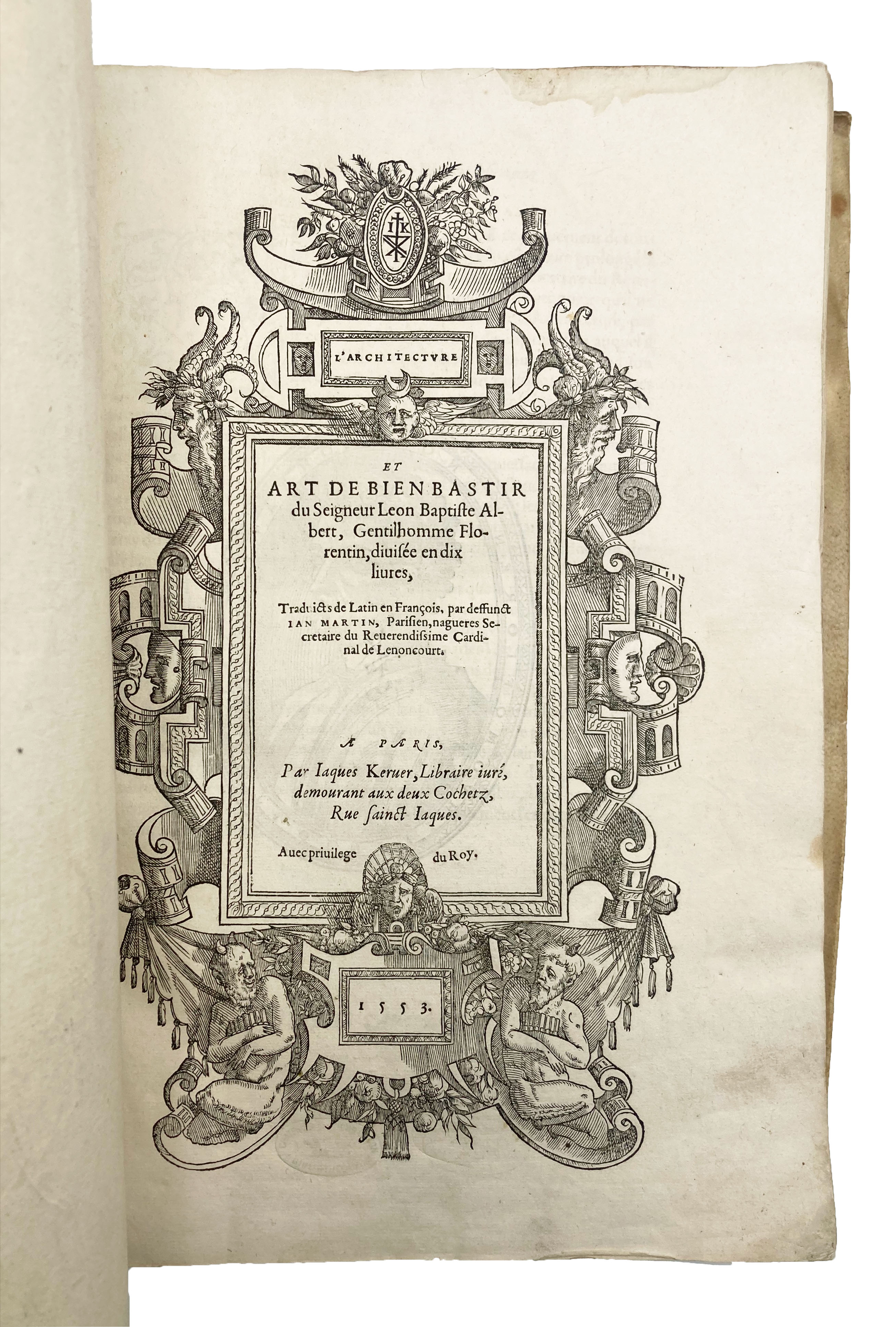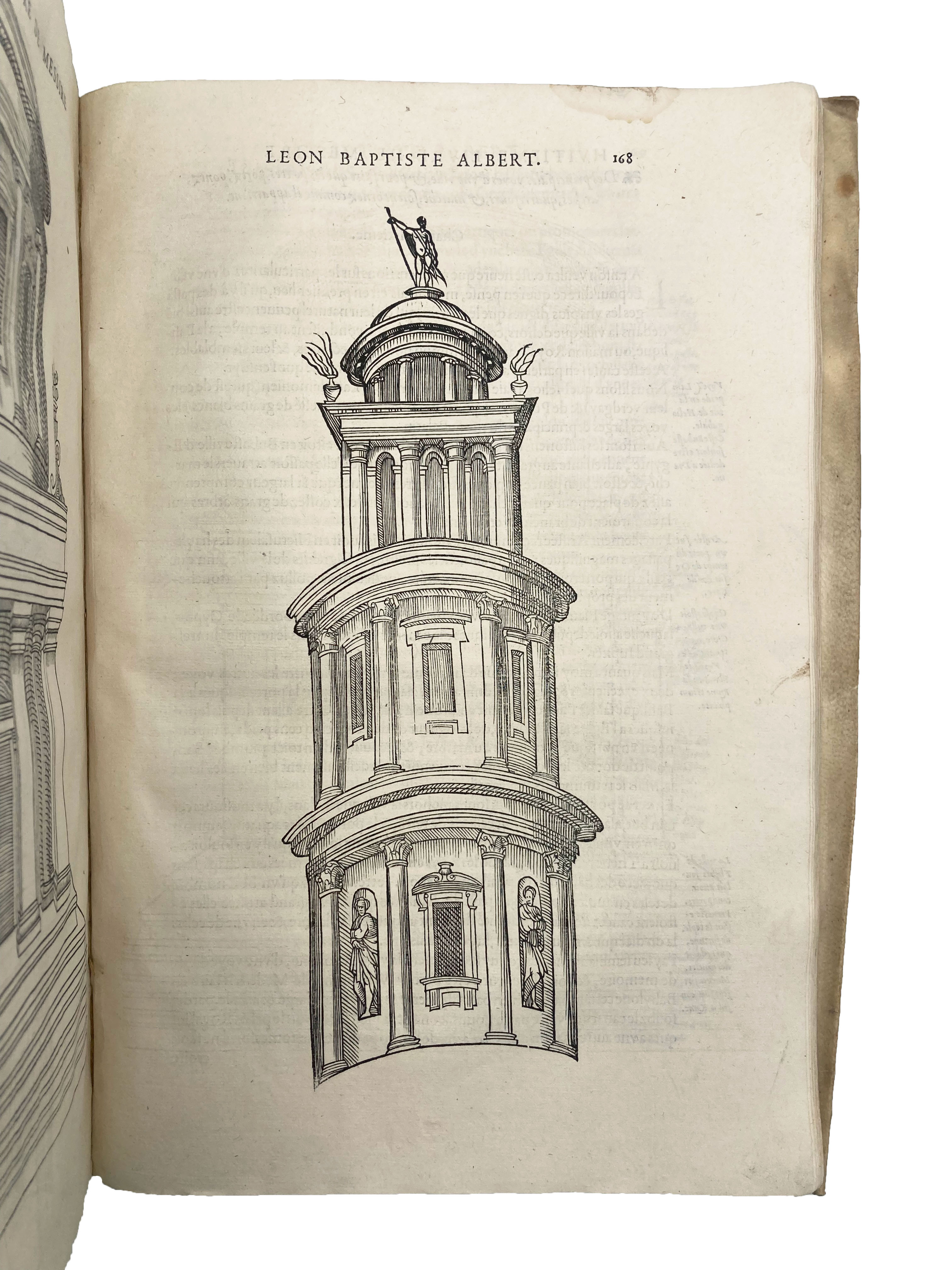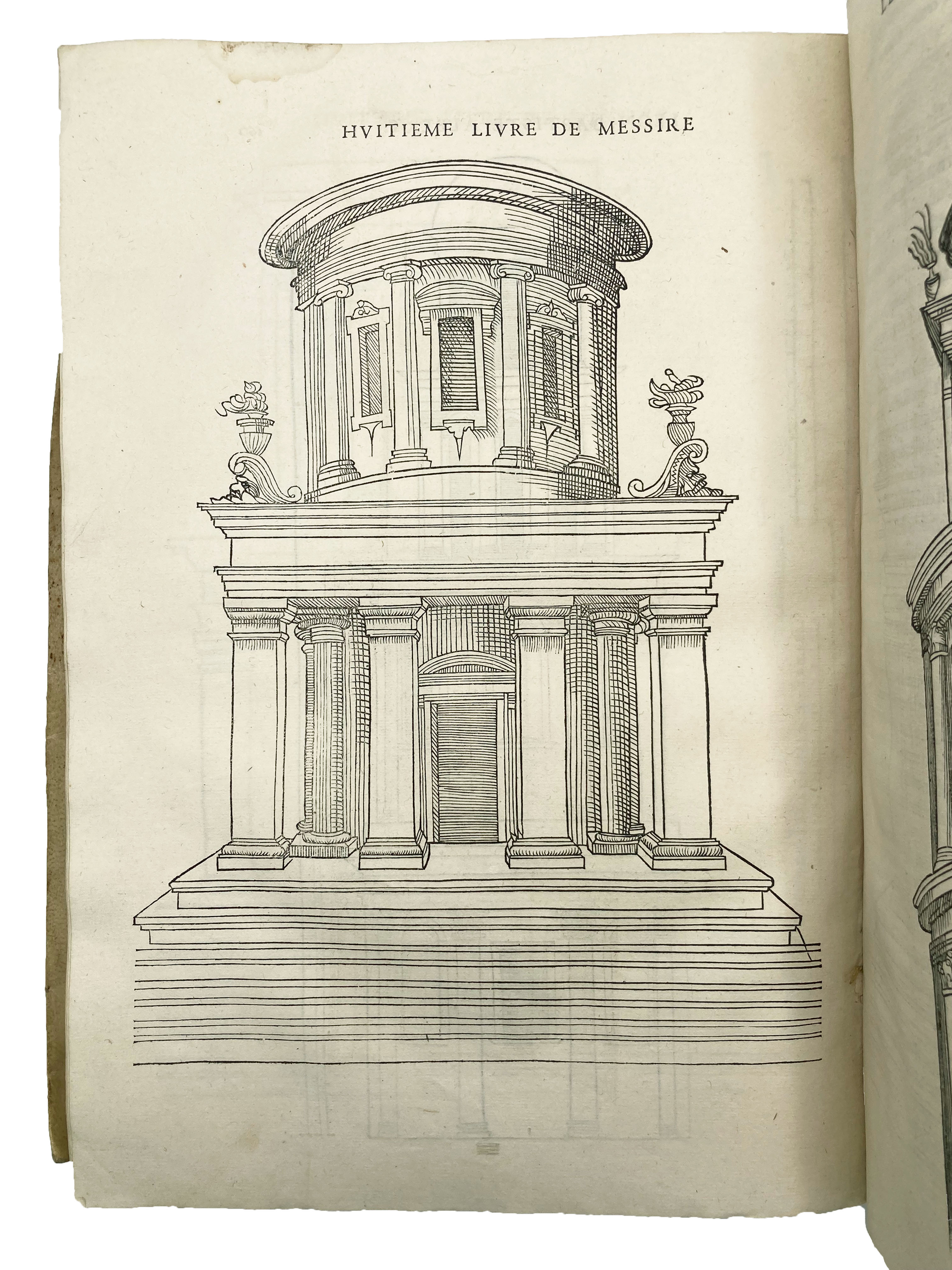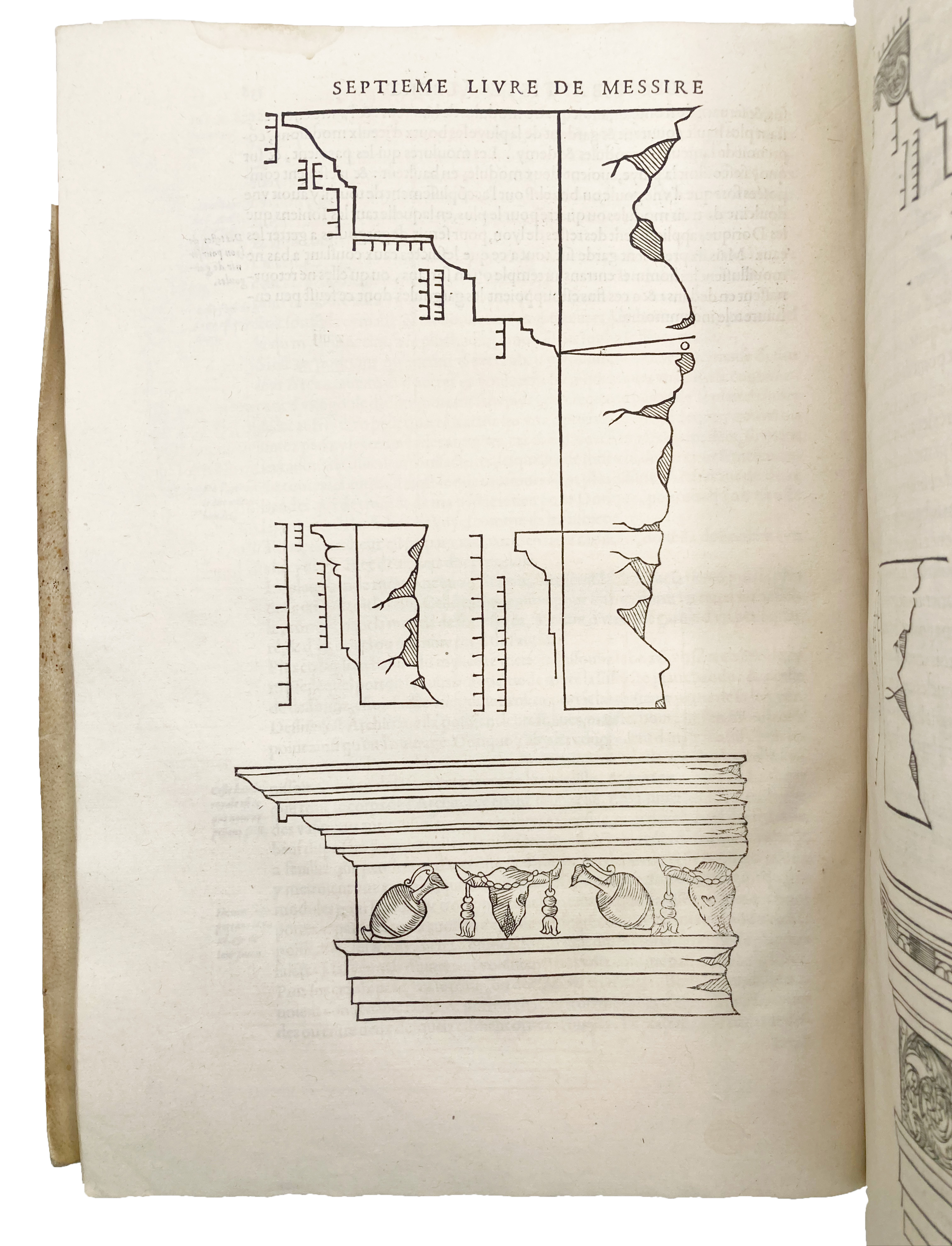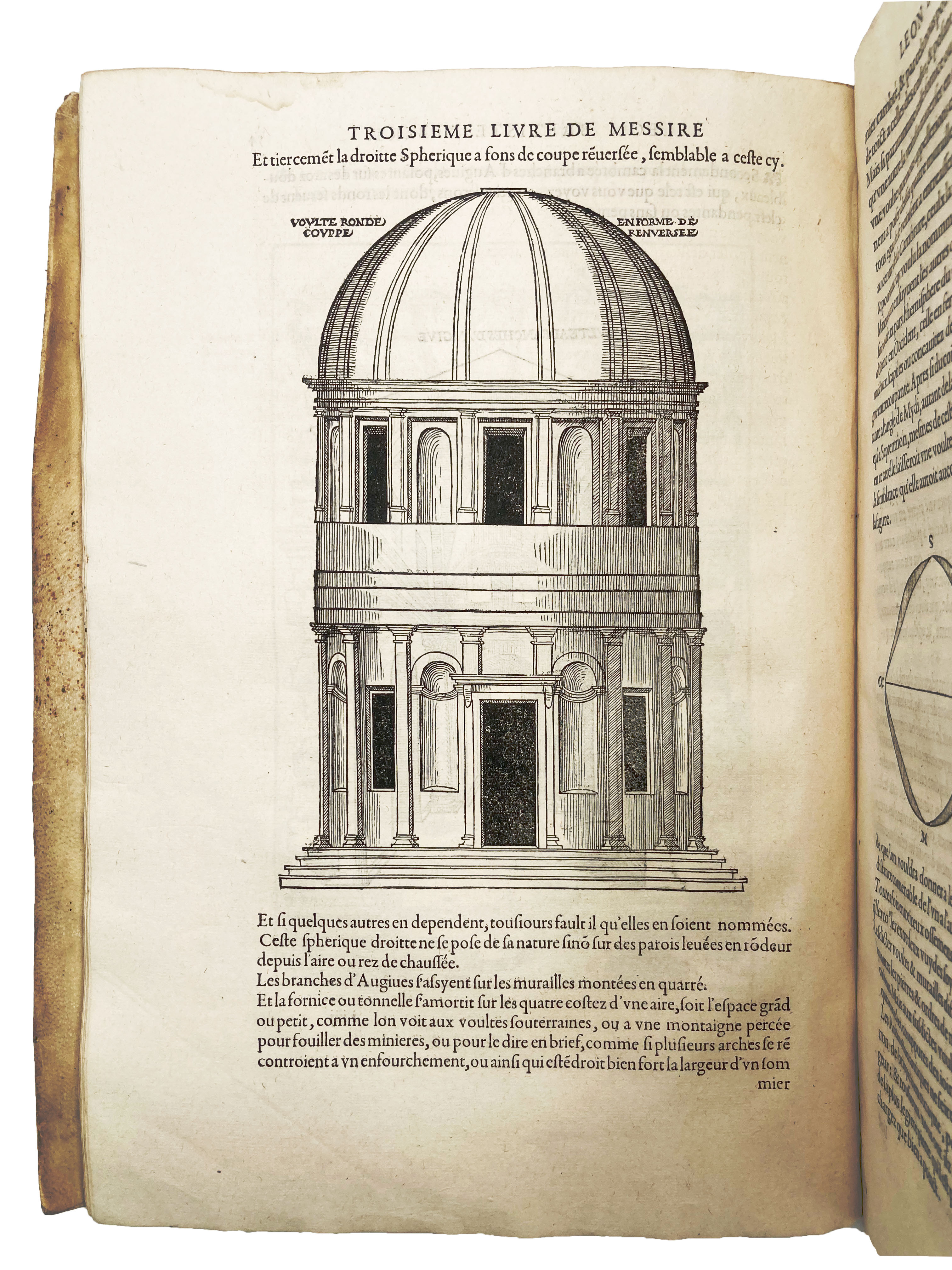ALBERTI, Leon Battista
AN OUTSTANDING COPY
L\'Architecture et Art de Bien Bastir
Paris, J. Kerver, 1553£19,500.00
FIRST FRENCH EDITION. Folio. ff. [8], 228 + 1 double-page plate. Roman letter, with Italic. Title within decorated woodcut border with grotesques, nearly 100 full-page or smaller woodcut diagrams, and plans and elevations of buildings, one double-page plate, author’s portrait to verso, printer’s device to last verso, decorated initials and ornaments. Intermittent small, light water stain to upper edge, couple of very light ink splashes to L4-6, lower outer blank corner of last 4ll. a tiny bit chewed. An excellent, well-margined copy, fresh and clean, in contemporary French wraparound limp vellum, lacking ties, yapp edges, contemporary vellum ms (notarial document mentioning Anthoine du Prat, first president of Paris) used as spine lining (visible), very minor traces of chewing to upper or lower edge, lower cover detaching but sound.
An excellent, unsophisticated copy, in original binding, of the first edition in French of this milestone of European architecture – with nearly 100 exquisite woodcuts. A sumptuous edition, with a translation by Jean Martin, dedicated to Henri II and with dedicatory poems by Ronsard. About half of the woodcuts were based on those of the first ed. in Italian (1550), with the remainder inspired by the woodcuts in Serlio’s Book III and the 1521 and 1548 eds of Vitruvius’ ‘De Architectura’. The initials were originally designed by Kerver for his 1546 ed. of Colonna’s ‘Hypnerotomachia’.
Leon Battista Alberti (1404-72) was an architect and polymath. His ‘De Re Aedificatoria’ , based on Vitruvius’ ‘De Architectura’, was the first Renaissance book on architectural theory. The French translation follows the structure of the original, in 10 books, on designs (with observations on the five orders of architecture); materials (e.g., lime, bricks, plaster); construction (with considerations on the nature of the location, foundations, and how to work with different materials); public works (e.g., walls, bridges, drains); buildings for specific individuals (royal castles, fortresses, porticoes, town and country houses); beauty and ornaments (with aesthetic considerations and practical explanations, e.g., how to move or raise large stones); ornaments for holy, public, secular, and private buildings (e.g., churches, theatres); and building improvements (e.g., defects in buildings, how to manage water flow, and how to make rooms warmer or cooler). Although partly superseded by Serlio’s work, Alberti’s work remained a pillar of architectural literature well into the C17. Jean Martin had also translated Vitruvius’ ‘De Architectura’ in 1547, for the first time seen in French; both works had the phrase ‘Art de bien bastir’ in the titlepage. ‘Martin’s decision […] was deliberate and considered, as it served him well in reaching a more vernacular audience of builders’ (Trubiano), whilst at the same time producing a luxury edition in format and layout. A very attractive copy.
USTC 43376; Pettegree 51357; Fowler 7; Millard, French, 2; Mortimer, French, 12. Not in RIBA or Brunet. F. Trubiano, Building Theories (2021)In stock


